Sponsored Listings:
Iceland is known for its fiery volcanoes, icy glaciers, the original Geysir, the Northern Lights and whale-filled seas.
There are so many reasons to take a holiday in the country, but here are some of the best – should you need convincing.
Reyjkavik from Hallgrímskirkja
1. It’s got a seriously cool capital
You’ll probably fly into Reykjavik, which is the northernmost capital city in the world.
It’s surrounded by water, overlooked by mountains, and is home to just over a third of Iceland’s entire population (which is only 330,000 people).
The best place to get a good view of the city is from the tower of Hallgrímskirkja – the country’s largest church.
Reykjavik’s also got a really cool music scene. In the 1990s, it launched acts like Björk, Sigur Rós, and, more recently, Of Monsters and Men, and inspired international stars like Blur.
2. Whatever the weather, you’ll find something to see
The Northern Lights are as elusive as they are incredible. But being so close to the Arctic Circle, you’ve got a good chance of seeing them in Iceland during the autumn and winter months.
Winter is also the perfect time to take a guided tour across one of the country’s glaciers, like the Crystal Cave at Vatnajökull.
If you’re visiting in spring or summer, you’ll get almost round-the-clock sunshine. During the summer solstice, the sun never actually sets in the north of the country and barely dips below the horizon in Reykjavik.
Spring and summer is also a good time to take advantage of the calmer seas and head out on a whale watching trip from Reykjavik Harbour.

Sun Voyager
3. It’s a nation that’s in touch with its history
Iceland’s Viking heritage is all around (just take a look at the Icelandic football team’s war-cry celebrations in the Euro 2016).
There’s a lot more to the country’s history than just the Vikings though – we’re talking about the Greeks, Romans, Celtics and many more besides. To find out more, visit the National Museum of Iceland and the Culture House, which are filled with historic artifacts, and local arts and crafts.
Entry to both is free with a Reykjavik City Card, which can be bought (in 24, 48 and 72-hour options) at the tourist information office and at many hotels.
The nomadic nature of Iceland’s people is also celebrated in the Sun Voyager sculpture, which has sat overlooking the water from Reykjavik’s harbour since 1990.
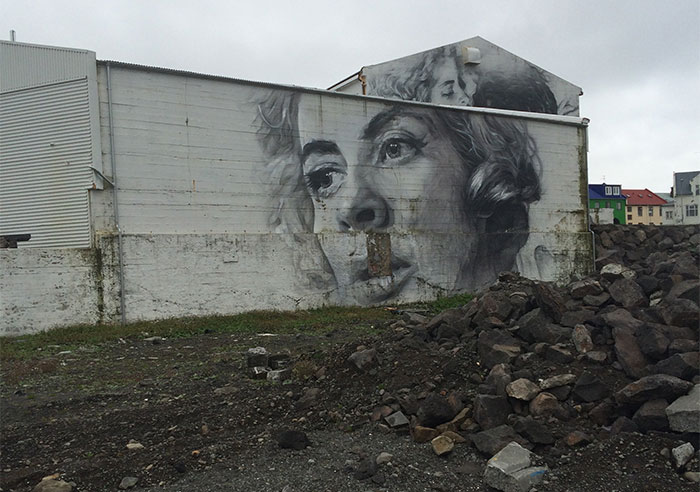
Reykjavik street art
4. You can see modern art without going to a gallery
Everywhere you walk in the city, you’ll inevitably stumble across striking contemporary art. There are colourful murals on the side of many houses and buildings.
If you are in the market for a gallery though, the Reykjavik City Card will get you into the Reykjavik Art Museum, which is spread across three galleries around the city’s waterfront.
Hafnarhús is the one to see – it houses both a collection of paintings by local pop-artist Erró, and a café with beautiful harbour views.
Downtown Reykjavik also has some independent galleries, many of which are free to enter.
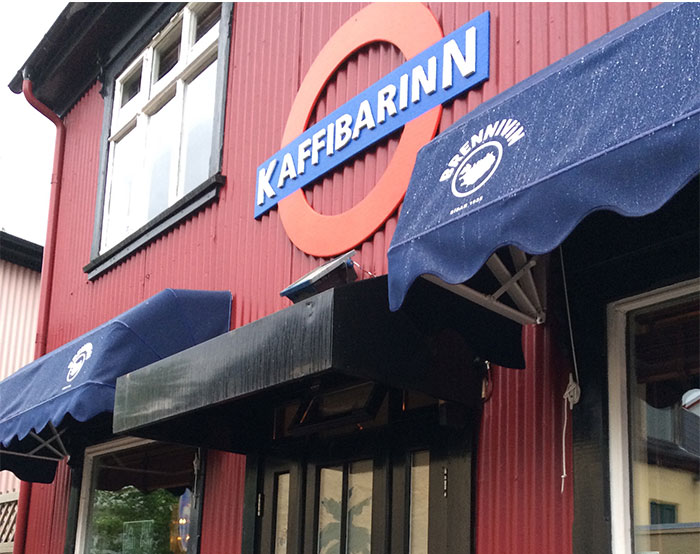
Kaffibarinn
5. You can have a really good night out
Downtown Reykjavik might be relatively small, but it’s not lacking in bars and clubs.
Have a drink or two in Kaffibarinn. Noticeable for its London Underground-style bar sign, the bar is, allegedly, co-owned by Blur’s Damon Albarn. Even if you don’t spot Albarn, the bar’s still a very cool place to hang out, with live music and DJ sets most nights of the week.
The boutique Hotel Óðinsvé is home to Snaps Bistro, which is often more filled with locals than hotel guests, and the Loft Hostel is also a great place to mingle with locals and fellow travellers. It’s got a rooftop terrace, nightly entertainment and selection of local beers on tap.
Wherever you go, always dress to impress. The Reykjavik locals like to look their best, and some of the city’s bars and clubs have a strict dress code.
6. You can get mineral water straight from the tap
Seriously.
Icelanders are very proud of their tap-water, which flows straight from the mountains to the faucet. Needless to say, sales of bottled mineral water in the country are pretty low.
Almost all Icelandic homes and hotels also receive naturally heated hot water, which does mean that it smells a bit funny when it comes out the tap. But, don’t worry, it’s perfectly clean.
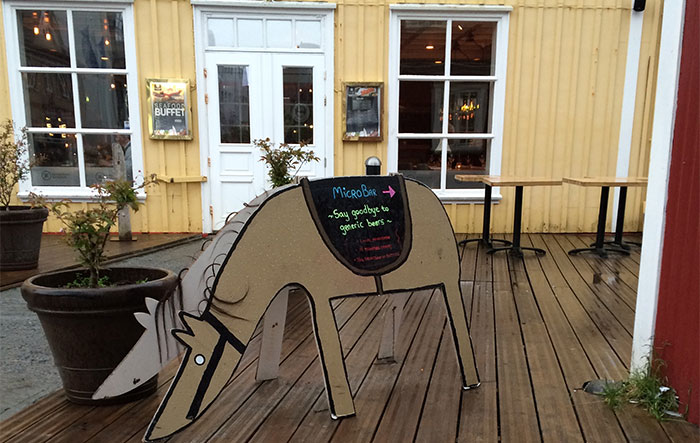
Microbar, Reykjavik
7…and, their beer’s not that bad either
Alcohol isn’t quite so easy to come by, and many Icelanders stock up at the duty free supermarket at Keflavik International Airport, rather than pay the high prices in the government owned “Monopoly” stores in town.
But thankfully, the cost of a drink in Reykjavik’s bars and clubs isn’t that much more expensive than most European capital cities.
Alcoholic beer was effectively banned in the country until 1989. The lifting of the prohibition is now celebrated with the Beer Day holiday every March 1st. Viking Lager is the most widely available (and one of the strongest).
Craft beer is also on the up, with Einstök and Borg Brugghús offering an ever-increasing line of speciality ales and lagers, made with Icelandic ingredients.
8. It’s the only place where you can brave a shot of “Black Death”
Brennivín – nicknamed Black Death – is an Aquavit produced by the country’s oldest brewery, Olgerdin.
The nickname comes from the overly dramatic government health warnings printed on the bottle’s black label. It’s been the national spirit since the 1930s and is always served as part of the Þorrablót mid-winter feast.
It’s more of a tipple for a special occasion, but, despite the foreboding nickname, it’s actually pretty tasty when served ice cold. As this brings out the most of the herbal flavour of the caraway seeds that the drink brewed with.
One of the country’s most popular sweet brands, Opal – instantly recognisable for its bold pop-art style packaging – also has their own liquor. Combining the flavours of menthol and aniseed, its thick, slightly cough medicine-like quality is a bit of an acquired taste, but it does warm you up on a chilly night.

Icelandic Phallological Museum
9. It’s home to one of the world’s weirdest museums
The eccentric Iceland Phallological Museum on Reykjavik’s main shopping street is definitely falls within what you might call the “special interest” category.
The collection features the preserved penises of all sorts of animals, from the small, to the very large (including several whale specimens).
The exhibits, and the museum’s tongue-in-cheek way of presenting them, might not exactly be to everyone’s tastes (as one of its own, questionably scientific, displays claims, the museum will only appeal to 1 in 6 people).
But it’s certainly a unique collection, which you won’t find anywhere else.
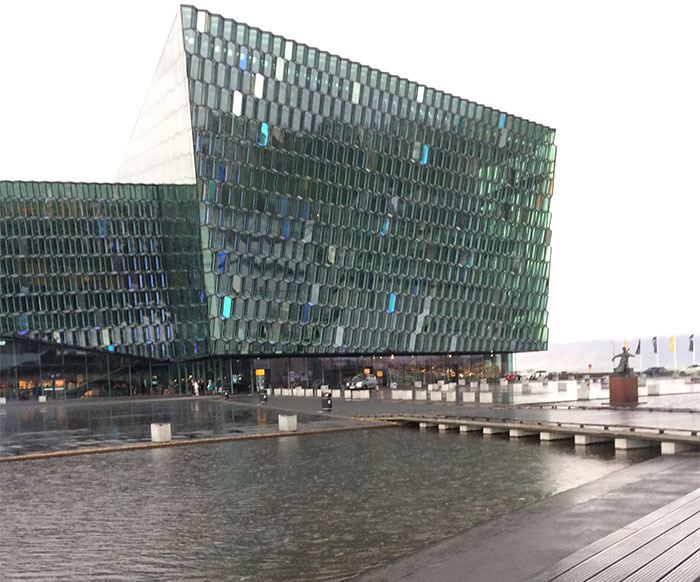
Harpa
10. It’s a great place to catch live music
In many bars around the country you’ll find live music happening most nights of the week. Icelandic language hip-hop is the latest sound to be rocking the city.
But if you’re looking for something a bit more high-brow, opt for the Harpa concert hall and exhibition centre on Reykjavik’s waterfront.
Designed by Danish-Icelandic artist Olafur Eliasson (the man behind Tate Modern’s iconic indoor sun installation) Harpa’s glass façade is inspired by Iceland’s volcanic rock formations.
It’s currently home to the Icelandic National Opera and Symphony, but regularly hosts visiting orchestras and dance companies.
11. There are festivals all year round
Ever partied inside a live volcano?
The Secret Solstice festival, held (as the name would suggest) around the Summer Solstice each year did exactly that as part of its 2016 programme.
It’s also known for its incredible line-ups, round-the-clock entertainment and lavish parties (the 2016 festival even offered a £1million ticket with all sorts of added perks).
In early November, national airline Icelandair stages its own festival, Iceland Airwaves. You can hear the best of the local music scene in venues all around Reykjavik, and stages concerts by more well known European and American rock and indie artists.
Sónar, a spin-off of the Barcelona festival, takes over the city in February if you’re into electronic music and tech talks.
And, outside of Reykjavik, you’ll find the extremely intimate Bræðslan Music Festival in East Iceland, where international acts perform in a village that’s normally home to just over 100 people. Or try the Djupivogur Hammond Festival, dedicated entirely to the Hammond Organ.
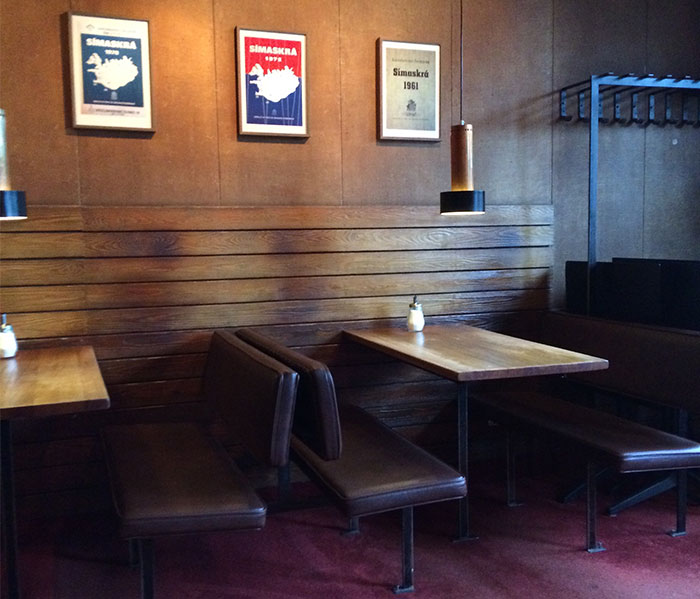
Mokka Kaffi
12. They do really good coffee
With a couple of exceptions, you won’t find your regular high street coffee brands around Reykjavik.
Mokka Kaffi in the city’s main shopping area opened back in 1958, and hasn’t changed much since (in a good way). They serve espressos in modern Scandinavian-chic style surroundings.
For something a bit more contemporary, head down to Vìnyl, a few minutes’ walk away. They serve an all-vegan menu, with a bit of a rock ‘n roll theme, and stocks a selection of records by local bands and vintage LPs.
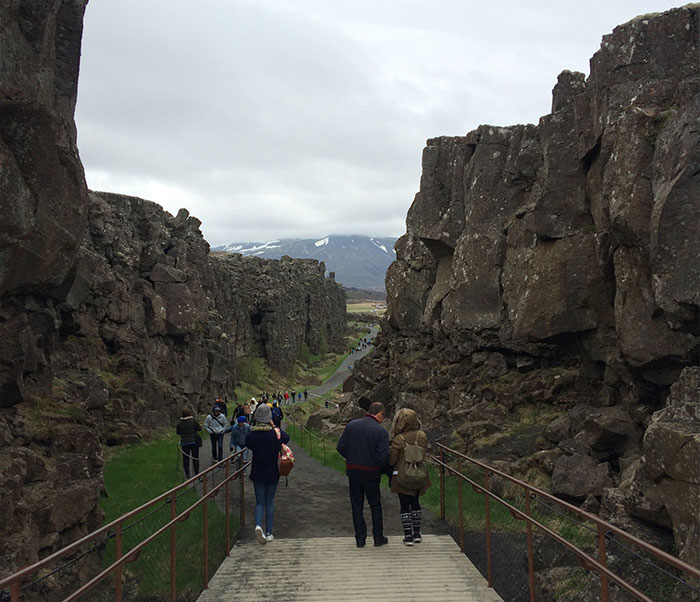
Þingvellir
13. Icelandic politics are actually pretty interesting
Icelanders aren’t afraid to engage in a heated, but friendly debate on their national politics.
It makes sense when you consider that they’ve got the oldest parliament in the world – Þingvellir. Found in a national park, it was an annual meeting place for the country’s parliament from 930 until 1798.
These original parliamentary meetings were held in the open-air, so there aren’t any historic buildings to see. The site is actually found in a crevice, caused by an earthquake on the Eurasian-North American fault-line.
Þingvellir was made a National Park on its thousandth anniversary in 1930, and named a world heritage site in 2004. Nowadays, it’s one of the most popular things to see in Iceland. You’ll stop off there on a Golden Circle tour.
Even today, Icelandic politics is full of drama. In 2009, one of the country’s comedians, Jón Gnarr, founded his own satirical political party, The Best Party. Among Gnarr’s campaign promises was that he would make life more fun for Reykjavik’s inhabitants. He also refused to form a government with any politician who hadn’t watched The Wire.
Gnarr was elected Mayor of Reykjavik in 2010.

“Icelandic Delicacies III”, Cafe Loki
14. The food’s a lot better than you might have heard
When it comes to Icelandic food, you might have heard there’s a lot of lamb and fish around, and you might have heard about a particular dish called Hákarl – shark fillets that have been fermented underground, in urine, for several months.
And if it’s traditional food you’re after, you’ll find it over the road from Hallgrímskirkja, in Café Loki which serves an Icelandic-inspired menu (including, for the brave/stupid, Hákarl, served with a shot of Brennivín to wash it down).
Weird delicacies aside, there are restaurants that offer a more modern take on Icelandic dishes, like Reykvakik’s small branch of the fashionable Brazilian-Japanese fusion brand Sushisamba, which does tasting menus.
But surprisingly, where Iceland excels is junk food. The post-night out snack of choice is hot dogs – always served with rémoulade and both raw and fried onions. And around Reykjavik’s harbour you’ll find a selection of fish and chip shops (understandable, given the amount of fresh fish available there every day).
Then there’s Hverfisgata 12, often referred to as “Pizza with no name” as it, officially, doesn’t have one, making it a bit tricky to find at first. It’s a must-visit for its unique selection of toppings. The pork and pear and bacon and egg pizzas are particularly recommended.
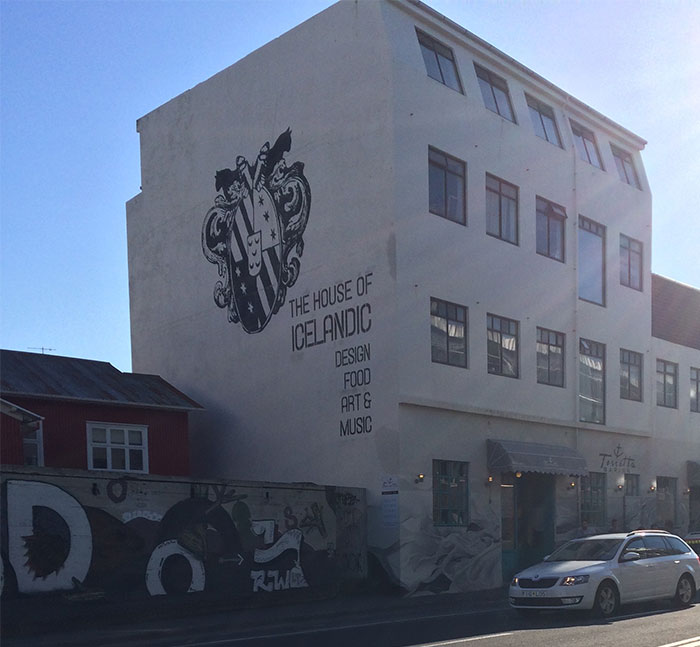
The House of Icelandic Design, Reykjavik
15. It’s a great place to update your wardrobe
Reykjavik residents are pretty stylish dressers, and you’ll find that many of the shops are just as fashionable, specialising in independent jewellery designs, vintage fashions and, of course, knitwear.
The Sarah Lund-style jumpers which the country is famous for can be picked up from shops all around the city. Entirely handmade from local wool, they’re not the cheapest of souvenirs, but will keep the cold out.
Perhaps the best place to buy one is the Handknitting Association of Iceland, which is staffed by a multi-generational collective of female knitters.
One of their branches is in the Radisson Blu Saga Hotel, but the original branch on the Skólavörðustígur shopping street is well worth a visit. With jumpers, socks and hats stacked from wall-to-ceiling, and women knitting in the back, it has a pleasantly nostalgic jumble sale feel.
Or, if you’re really serious about your style, time your visit with the Reykjavik Fashion Festival, which takes over Harpa for a week every year.
16. It does beach holidays with a difference
A couple of hours’ drive from Reykjavik sits Vík, Iceland’s southernmost village.
Known for its volcanic geology, the area’s black sandy beaches and spectacular rock formations have an otherworldly feel to them. It’s one the many parts of the country that Hollywood has turned to when looking for dramatic filming locations.
Nearby, at Sólheimasandur, you’ll find the remains of a U.S. Navy aircraft that crash-landed there in the 1970s. It’s isolated but remarkably well-preserved near the beach, and is a bit of a photo hotspot.
Between the capital and the neighbouring town of Kopavagogur, you’ll find Nautholsvik. Home to a man-made sandy beach and a collection of hot tubs, it’s a popular summertime hang-out.
However, with water temperatures hitting freezing, it’s best left to the only the hardiest of swimmers in the winter.
17. Despite those freezing temperatures, it’s still a great place to take a dip
No Icelander can graduate from school without first learning how to swim.
So there’s arguably nowhere better to get acquainted with the country’s residents than in the local pool – you’ll find at least one in every town around the country.
A word of warning: pre-swim nude showers are mandatory for all bathers (and this is heavily enforced).
However, when you can relax in the historic surroundings of Sundhöllin, the oldest pool in the city, or the thermal baths and botanical gardens at Laugardalslaug (entry to which is free with a Reykjavik City Card), it’s worth stripping off for.
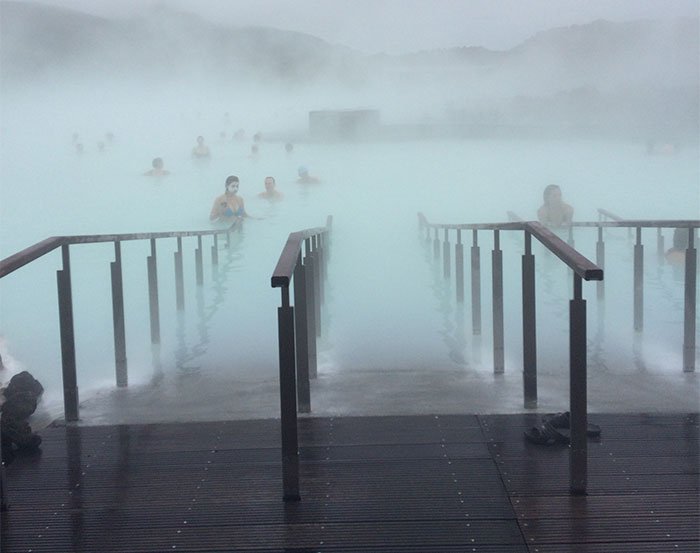
The Blue Lagoon
18. It’s home to the one of the modern wonders of the world
The Blue Lagoon was named one of the 25 wonders of the world by National Geographic. Technically, it’s a man-made structure, filled with heated seawater being the run-off from a nearby geothermal power plant.
However, workers at the plant found that the bright blue, mineral and algae-infused water worked wonders for the skin, and the place soon became a bit of a spa retreat.
With an average water temperature of 37-39 degrees Celsius, and on-site spa facilities offering massage treatments and elegant dining, it’s a relaxing place for a dip. Most flight transfer services offer an option to stop off there between Reykjavik and Keflavik International Airport.
The spa’s duty free boutique in the airport is also a great place to stock up on their signature natural beauty treatments, at a significantly reduced price.
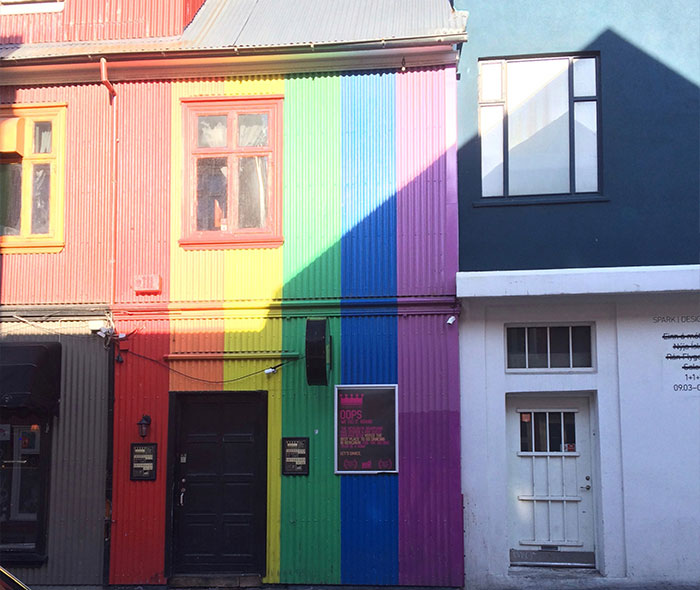
Kiki Bar, Reykjavik
19. It’s a country that’s full of Pride
Iceland is a great place for gay culture. In fact, it was the first country in the world to elect an openly gay Head of State.
Reykjavik’s Pride celebrations every August always attract a big crowd. The open-air concert that closes the festival each year regularly draws an audience of 100,000 people (that’s equivalent to almost a third of the country’s population).
No matter what time of year you’re visiting, you’ll find that Iceland is very welcoming to LGBT travelers.

Gullfoss
20. You can explore untouched landscapes
Iceland is the most sparsely populated country in Europe, which means there are vast areas of beautiful uninhabited land.
Two natural wonders are the Gullfoss waterfalls, another stop-off on Golden Circle tours, and the ferocious volcano Hekla, which aren’t too far from Reykjavik.
Or you could head further afield to the east coast, where there are several small towns and villages spread around the area’s forests and fjords, and almost as many reindeer as people.
The easiest way to reach the east coast, as well as the wild north-west of the country, is to take a flight from the domestic airport, which is within walking distance of Reykjavik city centre.
21. It’s a great way to turn one holiday into two
A short stay in Iceland is increasingly becoming a popular way to break up a transatlantic flight, with local airlines like Icelandair and WOW Air offering special packages and discounted fees on stopovers.
So, after a theatre break to New York, Chicago shopping trip or holiday in beautiful Montreal, see if you can stop off for a few days in Iceland before heading home. You’ll find plenty of connecting flights from airports around the USA and Canada.
Keen to discover Iceland for yourself? See our selection of Reykjavik City Breaks.
Have you been? Got any tips? Let us know about your favourite things to do in Iceland in the comments.
The post 21 Reasons You Should Definitely Go to Iceland appeared first on lastminute.com Blog.
Source: lastminute.com










